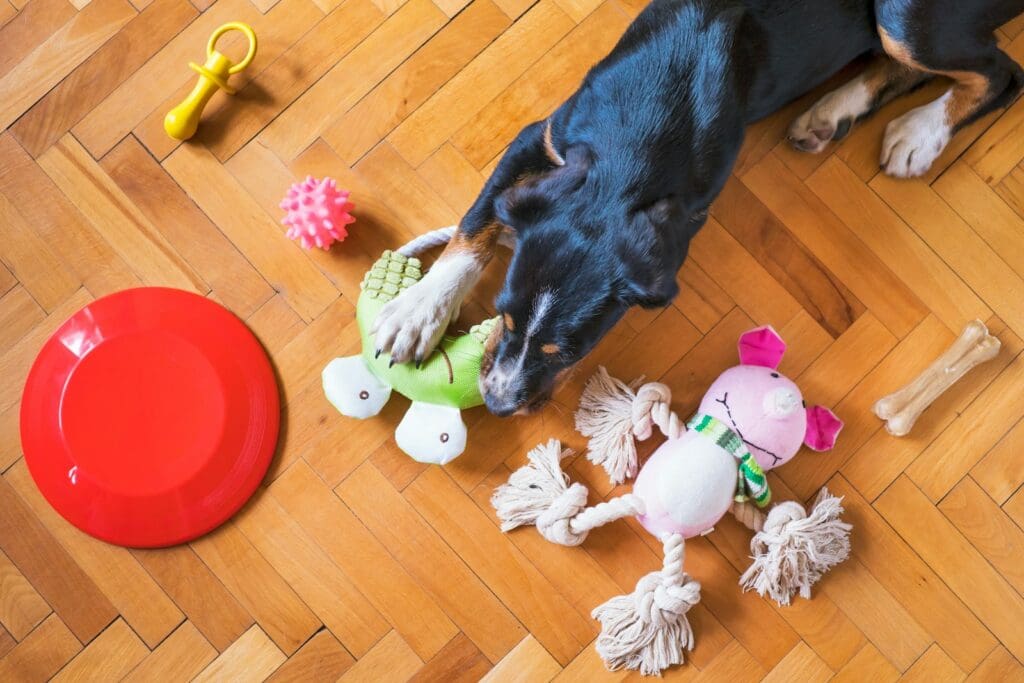Rescue dogs need around three days to decompress, three weeks to learn new rules, and three months to feel comfortable in new surroundings, according to experts. Do these 10 things before bringing a rescue dog home.
10. Prepare Your Home

Puppy-proof your home no matter the dog’s age. A curious and/or anxious dog can get into mischief. Move anything that could accidentally harm the dog. Start them off in a quiet, separate space of your household. Use pet gates to confine the dog to a certain area or block access to others. Shut doors to block access to rooms.
9. Accumulate Supplies

Before your dog arrives at your home, make sure you have all the necessary supplies. At a minimum, you’re going to need a collar and/or harness, leash, food and water bowls, various toys, food, treats, bed, create, and grooming supplies. If you’re bringing home a puppy, potty pads are also recommended.
8. Get the Dog ID

Get ID tags and a collar for your rescue dog. According to statistics, 1 in 3 pets go missing in their lifetime. Rescue dogs are also more likely to run away when first adjusting to a new home. You should also consider microchipping your pet. Some shelters or rescues do this automatically, but some don’t. Microchipping is inexpensive and painless.
7. Visit a Vet

Research veterinarians in advance and find someone you feel comfortable with. Weigh your options on distance from home/work, services offered, and costs. It’s always a good idea to have your rescue dog examined by a veterinarian to make sure there are no underlying health issues that require attention. You also may need preventative items such as heartworm and flea medications.
6. Consider Pet Insurance

Pet insurance can be a wise investment, especially with a rescue dog you don’t know the history of. Pet insurance can cover everything from preventative care to emergency needs. Depending on pre-existing conditions, age, and breed, another option is a pet wellness plan. These only cover routine care. It’s also good to have a fund for unexpected pet emergencies.
5. Plan a Routine

Your routine will be dictated by the dog’s age. Puppies need potty breaks every 1-2 hours and 2 or more meals daily. They also need daily exercise — from 1-2 hours total broken up into short sessions. No matter the dog’s age, sticking with consistent routines and times for these activities will help the dog feel more secure.
4. Prepare Your Family and Pets

Let children know to speak gently to the new dog, and resist the urge to pull their tail or fur. When introducing two dogs, make sure it occurs on neutral turf (take them to the park for example), and keep them separate in the home for a bit using crates and/or rooms and feed them in separate areas.
3. Be Prepared for House Training

Have a house-training plan before the dog arrives. Have a designated spot where you want the dog to relieve itself. The minute you arrive home with the dog, take it to the designated potty spot. Have treats to reward the dog for using the spot. Puppies need potty breaks every 1-2 hours, older dogs need 3-4 times daily.
2. Establish a Support System

Until the dog becomes comfortable in its new space, it’s not a good idea to leave the dog alone. If you can’t be there, make sure you have a support system whether it is a family member, friend, professional sitter, or walker. If you’re having trouble with the dog, don’t hesitate to reach out for professional help.
Read More: 10 Biggest Mistakes Dog Owners Make
1. Clear Your Schedule

Clear your schedule and make time to spend with the dog for its first few days. The dog will need two things:
- Some time alone in a safe space (although you need to be nearby for potty breaks or addressing any anxiety behaviors).
- Quiet time with only you and other family members. No visitors for the first few days.
Read More: 10 Reasons to Adopt an Older Dog






